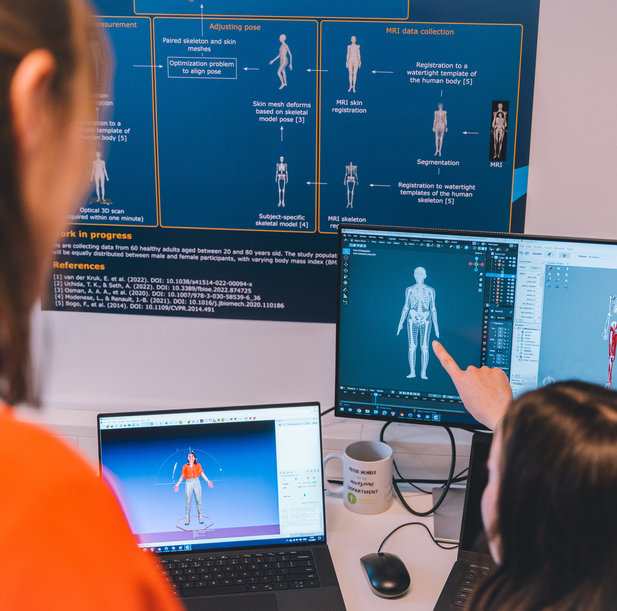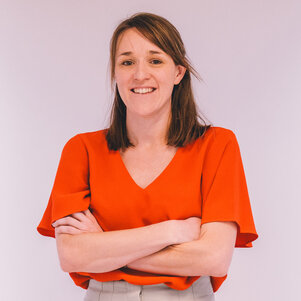Personalized musculoskeletal models that reflect the diversity of body types
Musculoskeletal models in research are now based on the body of an average male. Scientists from TU Delft, Department of Mechanical Engineering, investigate how accurate these models are for a broad population. The one-size-fits-all approach could hinder proper treatment by doctors and physiotherapists. The researchers are therefore working on personalized musculoskeletal models based on a simple 3D scan.
People do not always move optimally, which can lead to physical complaints. This can have many causes, from a cruciate ligament injury in the knee to mobility problems after a stroke. Musculoskeletal models could be used to assess people with suboptimal movement patterns. These models simulate the function of muscles, and the load on bones and joints to better understand movement. This can help with rehabilitation, for example by learning to use the muscles differently.
Deviations of up to 20 percent
In an ideal world, you would have a fully personalized model of each individual. In medical practice, this is not feasible. The process is time-consuming, expensive, and requires an MRI scan. Therefore, a standard model is used and then scaled as accurately as possible to an individual's body shape. Research by PhD candidate Judith Cueto Fernandez and Eline Van der Kruk, assistant professor of Biomechanical Engineering, shows how inaccurate this can be. “If you compare the existing approach with a fully personalized model, you see deviations of 15 to 20 percent”, says Van der Kruk.
You don't need to have an exceptional or unusual build for this: existing musculoskeletal models also fall short for women. Why is that? The standard model is based on the skeleton of an average man. This deviation can become problematic when you base treatments on this model. “Imagine you are recovering from a cruciate ligament injury and have an asymmetrical load on your knees”, illustrates Cueto Fernandez. “In that case, this asymmetry could go unnoticed, or overestimated. In that case, you cannot accurately measure the effect of a treatment.”
Diversity in science is essential
There is not yet a generic model for women, but for the researchers it’s about much more. “Ideally, you have a model that matches your physique as closely as possible, but that is currently not the case for men and women”, says Van der Kruk. Why is it that the generic models are only based on an average man? “Globally, only 28 percent of engineering graduates are women and because the research topics are chosen personally, you naturally get more male dominated topics”, she explains. “You also see that the research participants are more often male. They are often recruited at technical universities themselves, where there are simply more male students. There are also more male researchers and they sometimes find it an uncomfortable idea to have a woman in a sports bra in their lab. So this type of practical reasons can play a role.”

The researchers are now working on more representative models. Participants in the study receive a full-body MRI scan and their movements are monitored in the lab. The goal of the project is to make it easier to generate personalized musculoskeletal models. At the same time the research shows the limitations of using the 'generic model'. The researchers are training algorithms to estimate the shape of the skeleton and muscle properties based on body shape. Van der Kruk: "The ultimate goal is that in the future, with a 3D scan of a few seconds, you can create a personalized model."
No more MRI needed
This would mean that a doctor or physiotherapist could easily create a model themselves to better treat the patient, without the need for an MRI scan. According to Van der Kruk, this is becoming increasingly urgent: “With the rapid development of AI-based movement analyses, you can now even register movements with an app on your phone. But this software is based on existing models and is therefore not reliable enough to assess what is happening inside the body and thus does not do justice to the diversity of bodies and varying movement patterns among people.”
The clear link with medical practice is precisely why Cueto Fernandez finds her PhD research so satisfying: “It is very easy to see the practical application. We are not working on an abstract concept that might make a difference in twenty years. If things speed up a bit, this technology could improve medical practice.”


